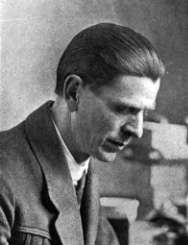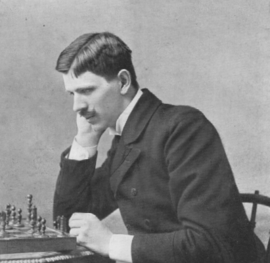Géza Maróczy facts for kids
Quick facts for kids Géza Maróczy |
|
|---|---|
 |
|
| Country | Hungary |
| Born | 3 March 1870 Szeged, Hungary |
| Died | 29 May 1951 (aged 81) Budapest, Hungary |
| Title | Grandmaster (1950) |
Géza Maróczy (born March 3, 1870 – died May 29, 1951) was a famous Hungarian chess player. He was one of the best players in the world during his time. In 1950, he was one of the first players to receive the title of International Grandmaster from FIDE, the world chess organization.
Contents
Early Chess Career
Géza Maróczy was born in Szeged, Hungary. This was on March 3, 1870. He started his chess journey by winning a smaller tournament at Hastings in 1895. Over the next ten years, he won many top prizes in big international chess events.
From 1902 to 1908, he played in thirteen tournaments. He won five first-place prizes and five second-place prizes. A special chess move setup, called the Maróczy Bind, is named after him. You can learn more about it below.
In 1906, Maróczy almost played a match for the World Chess Championship against Emanuel Lasker. However, they could not agree on all the details, so the match never happened.
Retirement and Return to Chess
After 1908, Maróczy stopped playing international chess for a while. He wanted to focus more on his job as a clerk. He worked as an auditor, checking financial records, and had a good career.
He made a short return to chess later on. He had some good results. In 1927 and 1928, he easily beat Géza Nagy, who was the Hungarian champion in 1924. Maróczy won that match with five wins, zero losses, and three draws. With Maróczy as their leader, Hungary won the first ever Chess Olympiad in London in 1927.
In 1950, FIDE created the title of Grandmaster. Maróczy was one of the players who received this title. It was given to him because of his great achievements in chess from the past.
Maróczy's Chess Style
Maróczy's chess style was very strong and careful. He was known for his excellent defensive play. He could defend against attacks very well. For example, he successfully defended against the Danish Gambit in games against Jacques Mieses and Karl Helling. These games are still studied today as examples of great defense.
Aron Nimzowitsch, another famous chess player, used one of Maróczy's wins as an example. This game showed how Maróczy could control his opponent's pieces before making his own breakthrough. Even though he was known for defense, Maróczy could also play exciting chess. A good example is his famous win against the attacking player David Janowski in 1900.
He was also very skilled at playing queen endgames. This is the final part of a chess game when there are only a few pieces left. His game against Frank Marshall in 1907 showed how well he could use his queen.
The Maróczy Bind
The Maróczy Bind is a special pawn setup that White can use in some variations of the Sicilian Defence. In this setup, White places pawns on the e4 and c4 squares. This makes it harder for Black to attack. It also stops Black from making many counter-moves.
What People Thought of Maróczy
Maróczy had good results against most of the top players of his time. However, he had losing records against the world chess champions like Wilhelm Steinitz, Emanuel Lasker, José Raúl Capablanca, and Alexander Alekhine. The only world champion he had a winning record against was Max Euwe.
But Maróczy's defensive style was often enough to beat other strong attacking players. He had winning records against players like Joseph Henry Blackburne, Mikhail Chigorin, Frank Marshall, and David Janowski.
José Raúl Capablanca, a former world champion, thought very highly of Maróczy. Capablanca described Maróczy as a "gentleman" and a "kindly figure." He praised the Maróczy Bind as an important idea in chess openings. Capablanca also said that Maróczy was a "good teacher" who helped Vera Menchik become a top female chess player.
Capablanca believed that Maróczy was "one of the greatest masters of his time." He also said that Maróczy was "a very accurate player and an excellent endgame artist." Capablanca even thought that Maróczy was better than most of the younger chess masters of his own time, except for Mikhail Botvinnik and Paul Keres.
See also
 In Spanish: Géza Maróczy para niños
In Spanish: Géza Maróczy para niños


